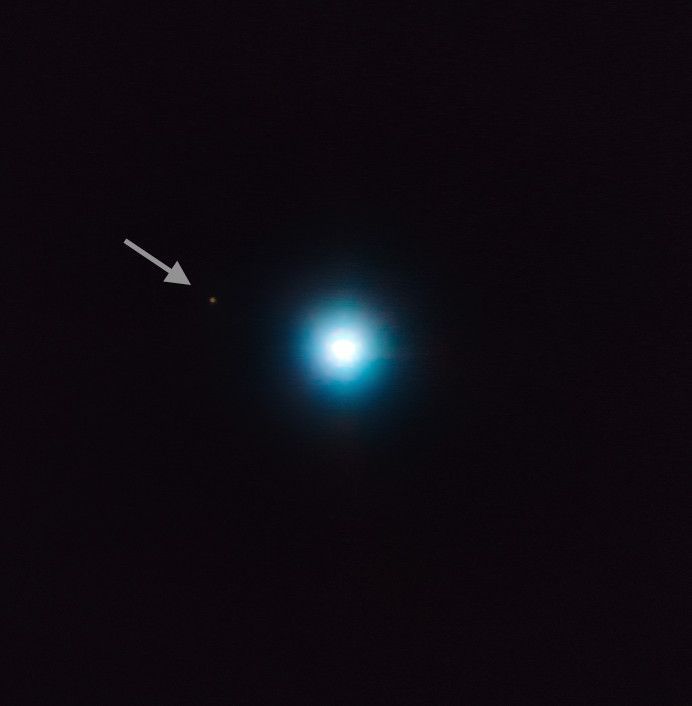Can you spot the possible alien planet in this photo?


Mandatory Credit: Photo by ESO/T. Preibisch / Rex Features (1893081r)
ESO
A fascinating photo shows what could be a newly discovered planet circling a star 1,200 light-years from Earth.
In 2012, scientists discovered that the star, called CVSO 30, hosts at least one possible exoplanet, named CVSO 30b. But this image, released on Monday, shows evidence of another world — dubbed CVSO 30c for now — that may also be circling the star, according to the European Southern Observatory (ESO).
CVSO 30 is the bright dot in the center of the image, and CVSO 30c — which has not yet been confirmed as a true planet — looks like a little brown smudge up and to the left of the star. (A new study also provides more details about the possible planet and its host star.)
Researchers think that CVSO 30c takes about 27,000 years to orbit the star, while it only takes about 11 hours for CVSO 30b to make a complete circuit.
CVSO 30b was discovered using the "transit method." It measures minute dips in a star's light, which can signal a planet passing in from of the stellar object from Earth's perspective. CVSO 30c, on the other hand, was discovered using direct imaging — which, as the name suggests, involves capturing a direct image of the planet.
The direct imaging technique "is particularly effective for planets on wide orbits around young stars, because the light from the planet is not overwhelmed by light from the host star," ESO said in a statement.
In this case, the planet's great distance from its star actually turned out to be an advantage for Earth-bound observers.
Both the transit and direct imaging methods have been used to find planets outside of our solar system, though many more have been discovered via the former, thanks to NASA's exoplanet-hunting Kepler Space Telescope.
NASA's James Webb Space Telescope, expected to launch in 2018, will carry tools to directly image exoplanets while also using the transit method to find others. By taking photos of alien worlds, scientists might be able to learn more about the nature of planets outside of our solar system.
Scientists used data from Chile's Very Large Telescope, the Keck Observatory in Hawaii and the Calar Alto Observatory in Spain to make this new discovery.
"Astronomers are still exploring how such an exotic system came to form in such a short timeframe, as the star is only 2.5 million years old," ESO added. "It is possible that the two planets interacted at some point in the past, scattering off one another and settling in their current extreme orbits."
Политика конфиденциальности | Правила пользования сайтом








